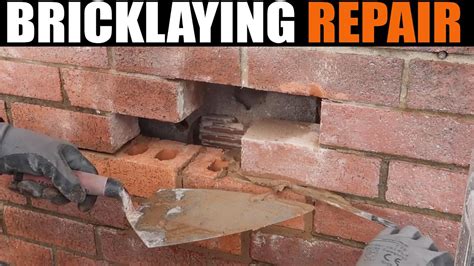Repair Your Bricks Like a Pro: The Benzoyl Peroxide Method
Brickwork, a testament to enduring strength and beauty, can unfortunately succumb to the ravages of time, weather, and even unfortunate accidents. While a full-scale brick repair might require professional intervention, minor damage, like efflorescence (white powdery deposits), staining, or minor crumbling, can often be tackled with DIY solutions. One surprisingly effective method utilizes benzoyl peroxide, a compound commonly found in acne medication. This article will delve into the benzoyl peroxide method for brick repair, exploring its applications, limitations, and safety precautions.
What is Benzoyl Peroxide and How Does it Work on Brick?
Benzoyl peroxide is a powerful oxidizing agent. In skincare, it's used to kill acne-causing bacteria. On brick, it acts as a bleaching agent, effectively lightening stains caused by mold, mildew, algae, and even some rust. Its oxidizing properties also help to break down certain organic materials contributing to discoloration or deterioration. It's important to understand that benzoyl peroxide doesn't "repair" structural damage; it addresses surface imperfections.
What Types of Brick Damage Can Benzoyl Peroxide Treat?
Benzoyl peroxide is most effective for treating superficial brick problems. Here are some specific applications:
- Efflorescence: The white, powdery deposits on bricks are often caused by soluble salts migrating to the surface. Benzoyl peroxide can help bleach away these unsightly stains.
- Mildew and Mold Stains: These organic growths often discolor bricks, especially in damp or shady areas. Benzoyl peroxide's oxidizing power combats these stains effectively.
- Light Staining: From various sources, light discoloration can often be improved with benzoyl peroxide treatment. This could include water stains, light rust marks, or other minor blemishes.
What Types of Brick Damage Can't Benzoyl Peroxide Treat?
It’s crucial to recognize benzoyl peroxide's limitations:
- Structural Damage: Cracks, crumbling mortar, or significant brick deterioration require professional masonry repair. Benzoyl peroxide is not a structural fix.
- Deep Stains: Penetrating stains that have seeped deeply into the brick may not respond well to surface treatment.
- Oil-Based Stains: Benzoyl peroxide is less effective on oil-based stains. Different cleaning methods may be necessary.
How to Apply Benzoyl Peroxide to Bricks: A Step-by-Step Guide
Safety First: Always wear appropriate personal protective equipment (PPE), including gloves, eye protection, and a respirator, when working with benzoyl peroxide. The concentration of benzoyl peroxide in acne medications is generally safe for this application, but direct contact with skin should be avoided.
- Prepare the Area: Clean the brick surface thoroughly with a stiff brush and water to remove loose debris. Allow the surface to dry completely.
- Mix the Solution: Dilute benzoyl peroxide gel or cream with water. A 5-10% solution is a good starting point. Experiment on a small, inconspicuous area first to test for color changes.
- Apply the Solution: Use a paintbrush or spray bottle to apply the solution evenly to the affected area. Avoid oversaturation.
- Allow it to React: Let the solution sit for the recommended time on the product label, typically 30 minutes to several hours depending on the severity of the staining.
- Rinse and Repeat: Rinse the area thoroughly with clean water. If the stain persists, repeat the process, potentially adjusting the concentration or dwell time.
What are the Safety Precautions when Using Benzoyl Peroxide for Brick Repair?
- Always test a small, inconspicuous area first. This allows you to observe any potential reactions or color changes before treating the entire surface.
- Wear appropriate PPE. Gloves, eye protection, and a respirator are essential to protect yourself from contact with the benzoyl peroxide solution.
- Work in a well-ventilated area. Benzoyl peroxide can release fumes, so proper ventilation is crucial.
- Keep children and pets away. Benzoyl peroxide can be irritating to the skin and eyes.
- Follow product instructions. Always carefully read and follow the instructions on the benzoyl peroxide product you are using.
Are There Alternatives to Benzoyl Peroxide for Brick Cleaning?
While benzoyl peroxide offers an effective solution for some brick cleaning needs, other methods exist:
- Oxalic Acid: A powerful bleaching agent often used for removing efflorescence.
- Sodium Hypochlorite (Bleach): Can be effective for some stains, but should be used cautiously and diluted properly.
- Pressure Washing: A powerful but potentially damaging method that should only be used by experienced professionals.
Benzoyl peroxide can be a useful tool in your brick cleaning arsenal, but it's essential to understand its limitations and to prioritize safety. Remember that for significant damage, professional masonry repair is always recommended. This method should be viewed as a cost-effective way to address superficial imperfections, not a replacement for proper professional brickwork maintenance and repair.

